Customs related to jobs men and women in their society.
Gender roles
Early humans started to form communities and societies across the ancient world. Some developed into city-states.
Rise of Civilizations
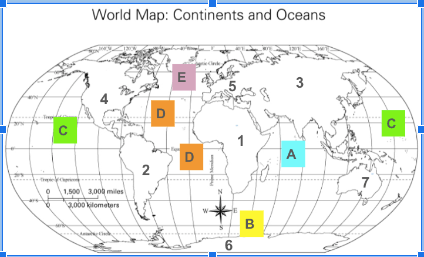 Name C
Name C
Pacific Ocean
Absolute location of E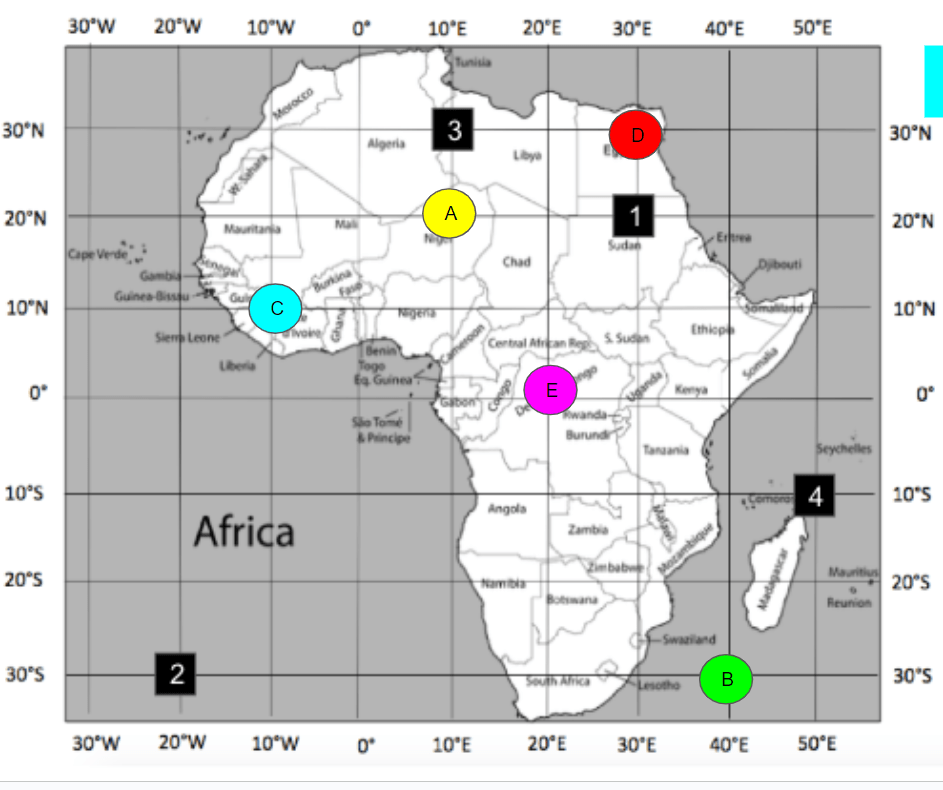
0 degrees and 20 degrees E
Disease, population growth, and migration
Human- Environment Interaction
An early, independent town with its own laws and government
City-State
The exchange of ideas, products, and advancements by way of large networks of trade routes connected the world, resulting in the combining of cultures.
Interconnectedness of Societies
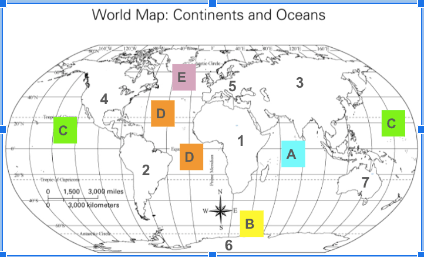
Name #3
Asia

Absolute Location of #1
20 degree N 30 degree E
Exchange of inventions and products, spread of religions and art, the practice of diplomacy
Interconnectedness of Societies
Family relationships through birth, marriage, or adoption
Kinship
The environment has affected how and where people live and how they support themselves.
Human-Environment Interactions
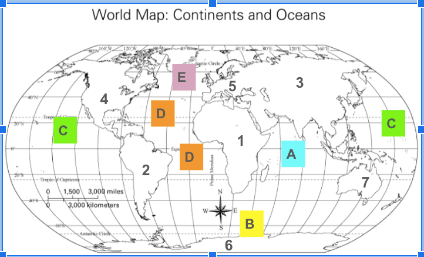
Name #1
Africa

Absolute location of B
30 degrees S and 40 degrees E
Forms f government, how city-states grow
Development of Political Institutions and Ideas
Having parts connected or linked together
People formed social groups to provide for their essential needs that later formed societies with social structures that differ from culture to culture.
Growth and Change of Societies
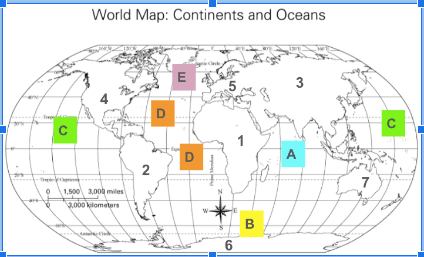
Name E
Arctic Ocean
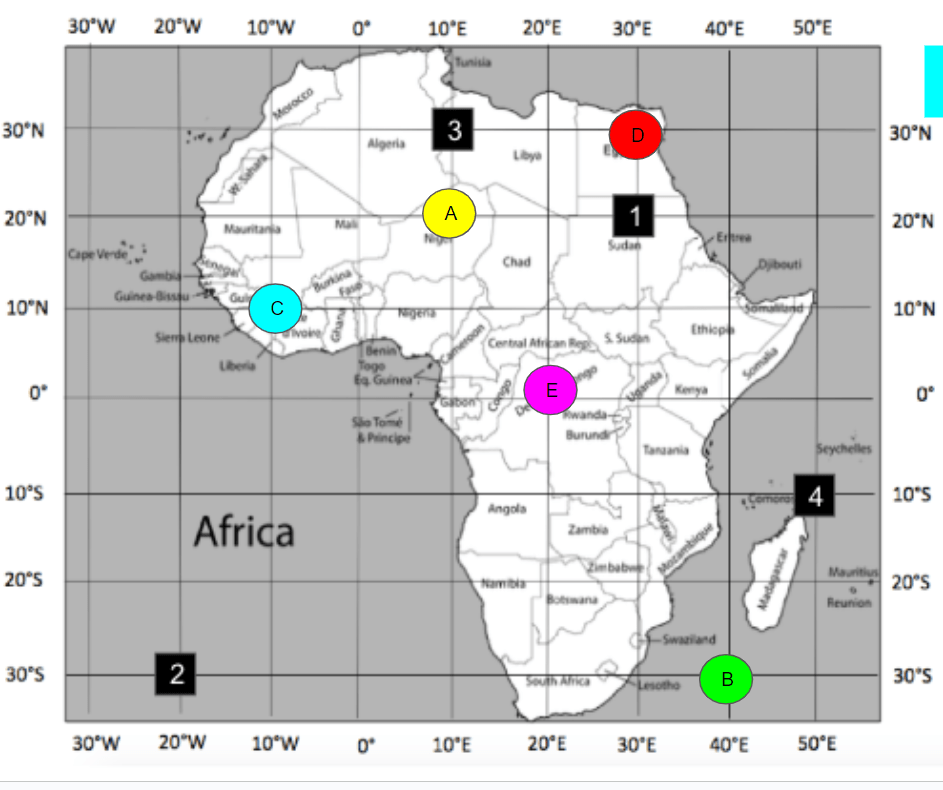
Absolute location of D
30 degrees N and 30 degrees E
customs relating to family kinship, racial and ethnic differences and their impact on society, division of social and economic class
Growth and Changes in Soieties
Values on how to live one’s life, or the search for wisdom
Philosophy
People developed simple and complex governments and systems that played key roles in the growth of civilizations.
Development of Political Institutions and Ideas

Name #5
Europe
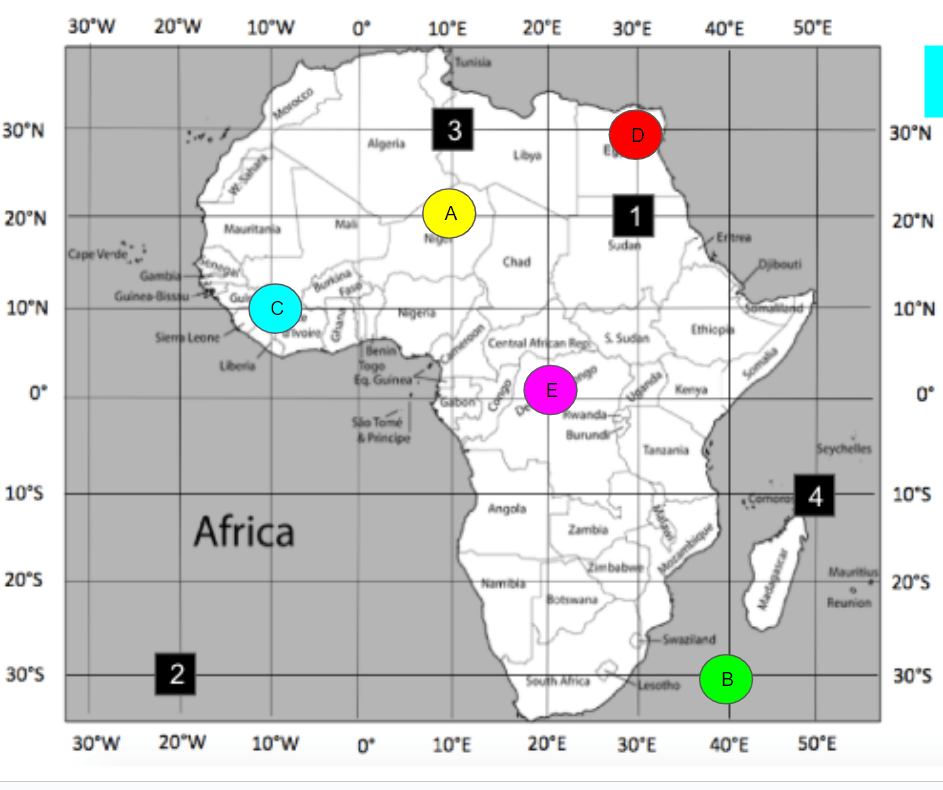
Absolute location #4
10 degree S 50 degree E
the impact of three philosophies on Chinese societies and order
Belief Systems